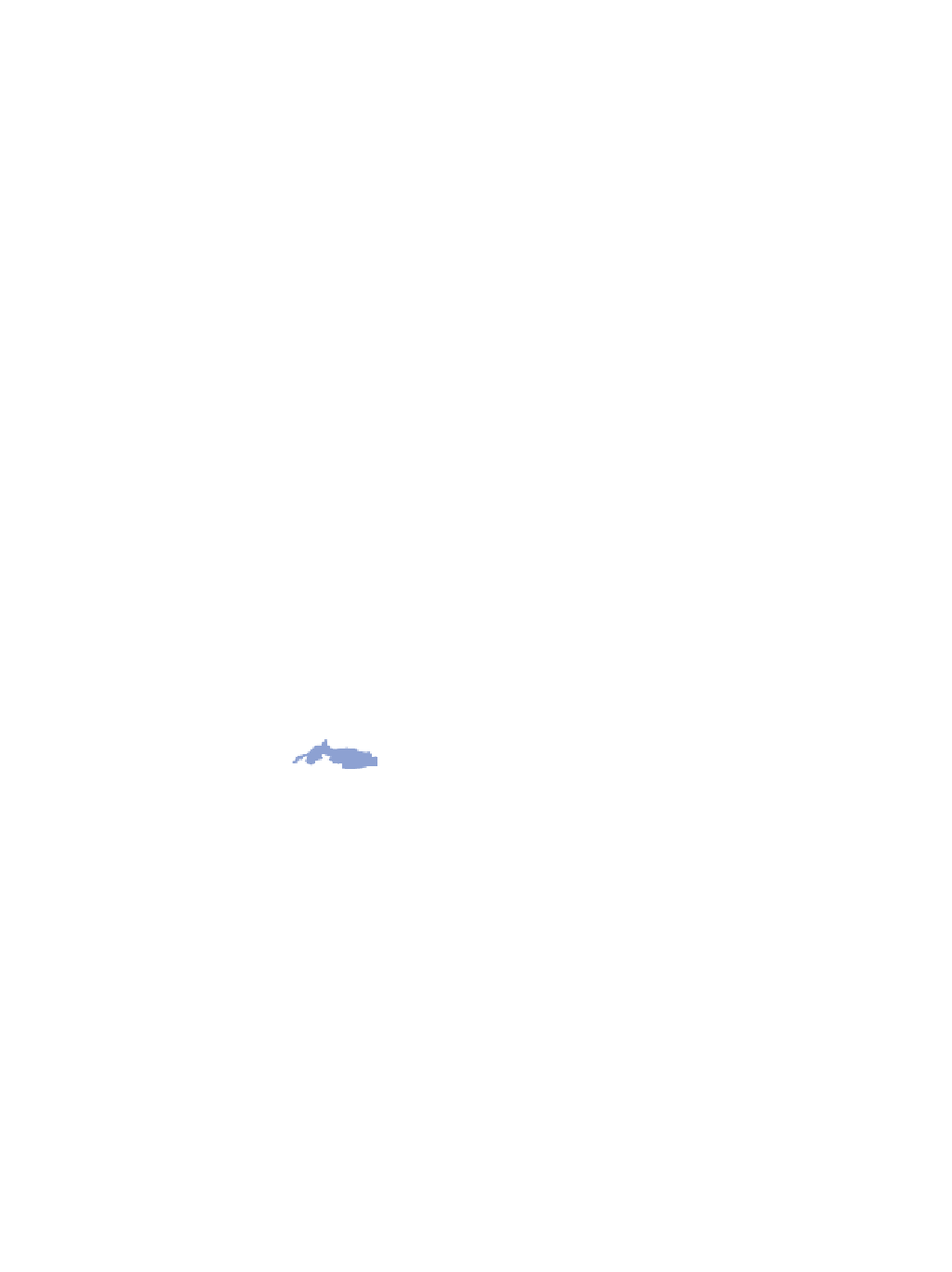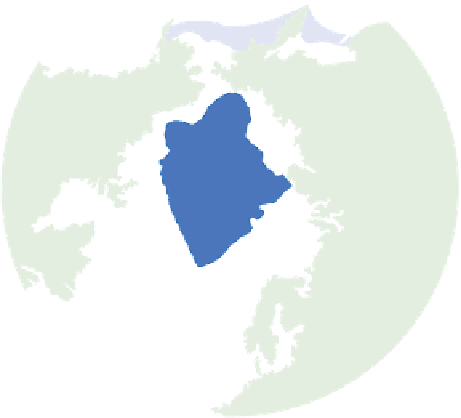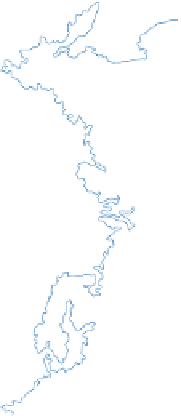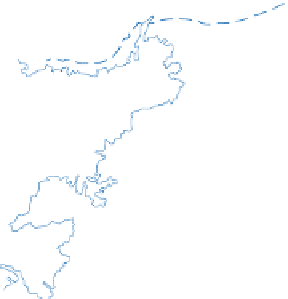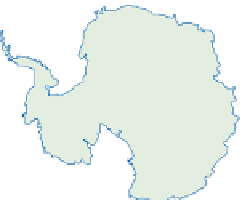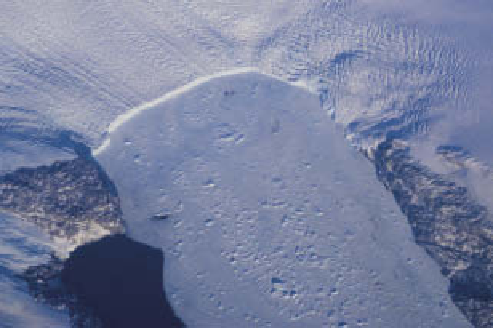Geoscience Reference
In-Depth Information
Glacier ice
Glacier ice is fashioned from snow, hail, sublimation
(direct deposition) and rain or dew which subsequently
freezes. Snow is transformed through several recognized
stages before becoming mature glacier ice capable of
substantial geomorphic activity.
Snowpack
is highly
porous and held together by a frozen crystal lattice;
pores contain air and, depending on temperature, perhaps
water vapour and/or water. In essence, transformation
progressively expels air and reduces void space through
autocompaction
. This process is assisted by the lowering
of freezing point under higher pressure. Further snowfall
increases overburden pressure on the snowpack, which
reaches its
pressure-melting point
at delicate snowflake
tips. Supercooled meltwater diffuses to areas of lower
pressure in the pack before
regelation
or refreezing/
recrystallization occurs. This process has some affinity
with rock crystallization and metamorphism. In addi-
tion, localized melt through insolation, advection or
geothermal heating assists consolidation if water then
regelates in colder parts of the pack. Tiny geometrically
complex snowflakes are transformed into assemblages of
progressively larger, amorphous ice crystals. Gravity tends
to draw this downhill as
regelation creep
, which initiates
tidewater glacier on the Davis Strait, south-east Baffin Island.
Photo: Ken Addison
of 2-2·5 m. Sea water freezes in each hemisphere's winter
and shrinks by half in summer (
Figure 15.2
).
Ground ice
forms when pore water freezes in terrestrial substrates and
accumulates as perennial
permafrost
. It usually occurs
where intense cold and aridity stifle glacier development
and underlies a further 25 per cent of modern land
surfaces.
(a)
(b)
180°
0°
Bering
45°E
135°W
135°E
45°W
Beaufort
East
Siberian
Larsen
Laptev
Ronne-
Filchner
Hudson
Bay
Amery
90°W
Kara
90°E
90°W
90°E
80°S
80°N
Ross
60°N
80°S
Barents
40°N
40°S
60°S
Baltic
45°W
45°E
135°W
135°E
0
2000
0°
180°
km
Late Pleistocene
winter ice
Modern
winter ice
Modern
summer ice
Modern
ice shelf
Ice limit
Figure 15.2
Global sea ice and ice shelf distribution. Polar seas are named in (a) the northern hemisphere and major modern
ice shelves in (b) the southern hemisphere.
